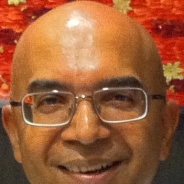A short recap of the Malaysian ethnic conundrum

Against the background of complex, multi-stranded ethnic history I’ve outlined, why call non-Malays immigrants? Whom does it help? Whom does it hurt?
Rama Ramanathan
In West Malaysia ethnic identity is a daily topic of conversation.
The Malay Superiority group Perkasa’s racist rhetoric routinely riles both Malays and non-Malays.Perkasites daily disparage non-Malay Malaysians by calling them “immigrants.”
The disparaged say “no way” are they like refugees who land on Malaysian shores and plead for favours and immigrant status. The disparaged say “this is our home, too.”
The life goal of a Perkasite appears to be: rant daily for unbridled favouritism for ethnic Malays.
In Malaysia, it’s easy to define a Malay. The supreme law of the land has defined a Malay. According to Article 160 of the Federal Constitution, a Malay is:
“a person who professes the religion of Islam, habitually speaks the Malay language, conforms to Malay custom and – (a) was before Merdeka day born in the Federation or in Singapore or born of parents one of whom was born in the Federation or in Singapore, or is on that day domiciled in the Federation or in Singapore; or (b) is the issue of such a person.”
No other race is defined in the Constitution. It is therefore necessary to teach the definition, even in schools, and answer questions which inevitably arise from enquiring minds.
It’s easy to define who’s ethnically Chinese and Indian: Chinese can trace their roots to China. Indians can trace their roots to Bangladesh, India, or Pakistan.
It’s not so simple for Malaysian Malays, for their roots are often in more than one place. Many Malays have roots in Indonesia, India, Pakistan and Thailand as well as in the Peninsula.
Our first Prime Minister had roots in Thailand. Our fourth Prime Minister had roots in India. Our present Prime Minister, Deputy Prime Minister and Home Minister have roots in Indonesia.
Yet, there clearly is a people group called “Malay,” whose identity is tied to the Peninsula.
Malayan Malays go back even further than the oldest Sultanate in Malaya, the Malacca Sultanate which was founded around 1400 BC by a Hindu prince called Parameswara who fled Indonesia. Parameswara was not born in Malaya. Parameswara became a Muslim in Malacca.
Malays are found in South Africa and in Sri Lanka. They are the ancestors of resistance fighters who challenged the Dutch invaders in Malacca and in Java. The resisters were punished by being exported as slaves. They were called Malays because they spoke Malay.
Malay rulers paid tributes to China and Thailand and became their vassals in order to avoid being attacked, destroyed or subjugated.
So, there is no doubt about it. People who identified themselves as Malays have lived for many centuries in the Peninsula.
The “Orang Asli” (“original people,” or “natives”) weren’t included in Constitutional discussions. They were in the interior, were few in number and were illiterate.Based on the Constitutional definition of Malays, the natives were not Malays since they did not profess Islam, did not habitually speak Malay, and did not conform to Malay custom. Note: Article 8(5)(c) of the Constitution allows favourable discrimination (i.e. affirmative action) for “the aboriginal peoples of the Malay Peninsula.”
Enough about ethnic origin. I’ll move on to geographical region. Indians and Chinese can trace their roots to India and China. What about Malaya?
Neither the Portuguese nor the Dutch bothered to unite the Malay kingdoms; they were satisfied with controlling Malacca.
It was the British who created the Straits Settlements and then the Federation of Malaya. To do this they had to persuade (some prefer ‘coerce’ or ‘entice’) the Malay rulers into cooperation.
To meet their objectives of smooth trade, exploitation of tin and cultivation of rubber, etc. the British needed local cooperation. They noticed the authority which the local, overwhelmingly Malay population allowed the Malay rulers to exercise over them. Therefore the British entered into treaties with the Malay rulers, to work in tandem with them to further their commercial interests.
Notice “Malay population” and “Malay rulers.” The treaties were made with Rulers who identified themselves as Malays and ruled over people who identified themselves as Malays. In the early days of British Malaya the vast majority of the population identified themselves as Malay- Muslims; at that time all the Rulers’ subjects adopted their Rulers’ religion.
Malays vastly outnumbered others until the British decided to exploit Malaya. They wanted to mine tin. They wanted to grow rubber. They needed to establish transportation, finance, administration, land ownership, law and order.The Malays rightly viewed the British as conquerors and oppressors. The Malays were settled and comfortable in their own land. Why would the Malays choose to do back-breaking labour and live in life-sapping squalor when they could live comfortably and safely in their villages?
Read more at: http://write2rest.blogspot.

